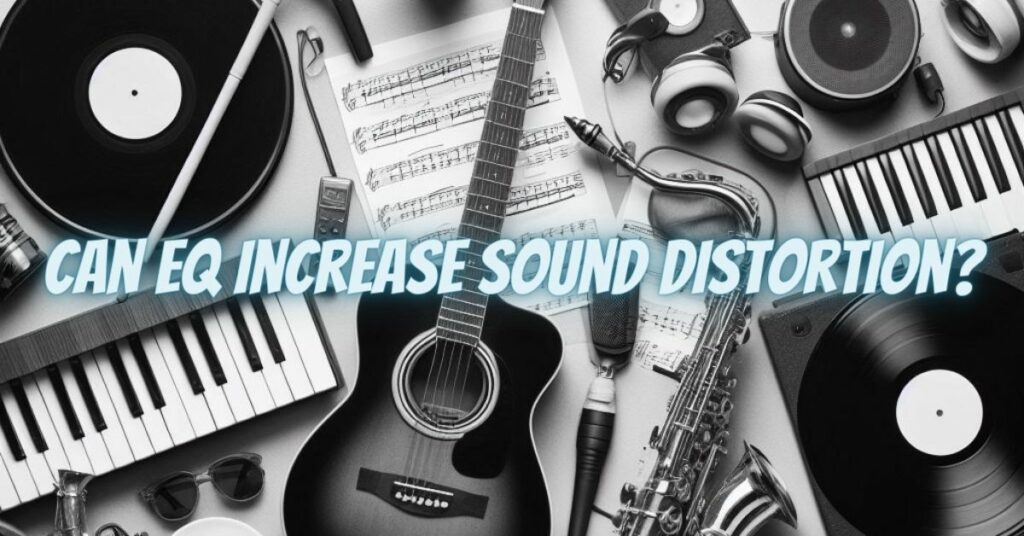Equalization, often abbreviated as EQ, is an essential tool in the realm of audio production. It allows engineers and enthusiasts to shape the tonal characteristics of sound, balancing frequencies to achieve the desired sonic result. While EQ is indispensable for many audio tasks, it is essential to understand its potential impact on audio distortion. In this article, we will delve into the relationship between EQ and distortion, exploring how equalization can both alleviate and exacerbate distortion issues.
Understanding Audio Distortion
Audio distortion refers to any unwanted alteration or degradation of the audio signal’s integrity. It occurs when the audio waveform deviates from the intended or original signal. Distortion can manifest in various forms, such as harmonic distortion, intermodulation distortion, and clipping. The main goal of audio processing is to minimize distortion while preserving the desired sonic characteristics.
Equalization Basics
Equalization, as a fundamental audio processing tool, allows sound engineers and musicians to adjust the balance of frequencies within an audio signal. It typically involves boosting or attenuating specific frequency bands using filters, such as high-pass, low-pass, band-pass, and shelving filters. The primary objectives of using EQ are to correct tonal imbalances, improve intelligibility, and shape the sound to fit a particular context, such as mixing for a specific genre or optimizing a room’s acoustics.
How EQ Can Increase Distortion
- Gain Staging: One of the primary ways EQ can increase distortion is by altering the gain structure of the signal. If excessive gain is applied during the equalization process, it may lead to clipping, a form of distortion where the signal level exceeds the maximum capacity of the audio system. Clipping can introduce harsh, unpleasant artifacts into the audio.
- Resonance and Filter Distortion: Certain EQ filters, particularly those with narrow bandwidths (high Q values), can introduce resonance effects. When boost is applied to these narrow frequency bands, it can accentuate resonant frequencies in the audio, potentially causing distortion. This is more commonly seen with analog EQ units but can occur in digital processing as well.
- Phase Distortion: Linear phase EQs and other advanced EQ algorithms can introduce phase distortion when altering the phase response of the signal. While phase distortion may not be as immediately audible as other forms of distortion, it can affect the spatial and imaging aspects of the audio.
- Non-linear EQs: Some EQ plugins and hardware units employ nonlinear algorithms to provide unique sonic character. These can introduce subtle harmonic distortion and saturation, which might be desirable in certain contexts but should be used judiciously to avoid overdoing it.
How EQ Can Decrease Distortion
- Frequency Correction: In many cases, EQ is used to correct tonal imbalances in audio signals. By attenuating or boosting specific frequencies, engineers can make a recording or mix sound more natural and free from distortion caused by resonances or deficiencies in the original sound source.
- Room Acoustics: In audio production and live sound reinforcement, EQ is used to mitigate the negative effects of room acoustics, such as standing waves, comb filtering, and reflections. By applying EQ to problematic frequency ranges, distortion due to poor room acoustics can be significantly reduced.
- Tone Shaping: EQ can be used creatively to shape the character of an audio signal. For instance, it can add warmth to a vocal or emphasize the growl of a guitar. When used skillfully, this form of EQ can enhance the overall sound quality without introducing undesirable distortion.
- Frequency-Based Effects: Equalization can be used to enhance various audio effects, like reverb, delay, or modulation. By carefully tailoring the frequency content of these effects, engineers can minimize the risk of distortion and achieve a more pleasing sonic result.
Equalization is a powerful tool in audio production, capable of both increasing and decreasing distortion. When used appropriately, it can significantly improve the quality of audio recordings and live sound. However, improper use of EQ, such as excessive boosting or neglecting gain staging, can introduce unwanted distortion. It is essential for audio professionals to strike a balance between achieving the desired sonic character and preserving the integrity of the audio signal. Understanding the relationship between EQ and distortion is crucial for producing high-quality audio and avoiding common pitfalls in the field of sound engineering.


